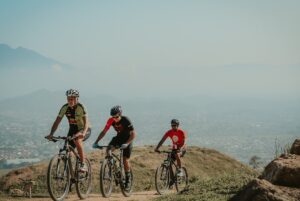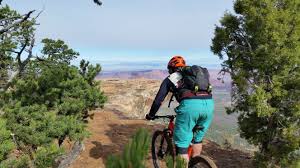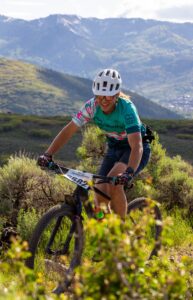Gear Up for Adventure: Navigating the World of Women’s Mountain Bikes
Gone are the days when the dusty trails and rugged terrains were a man’s world; mountain biking has seen a phenomenal surge in female riders. Mountain biking offers an exhilarating mix of adventure, fitness, and the freedom to explore nature’s grandeur. This article serves as a beacon for women who hear the call of the wild and the crunch of gravel beneath two wheels.
Understanding the nuances of mountain bikes designed specifically for women is fundamental to enjoying this thrilling activity safely and comfortably. Women’s mountain bikes cater to differences in body ergonomics, giving rise to the need for a guide that deciphers the technical jargon. Here, we lay the groundwork for selecting the perfect chariot to embark on terra firma adventures.
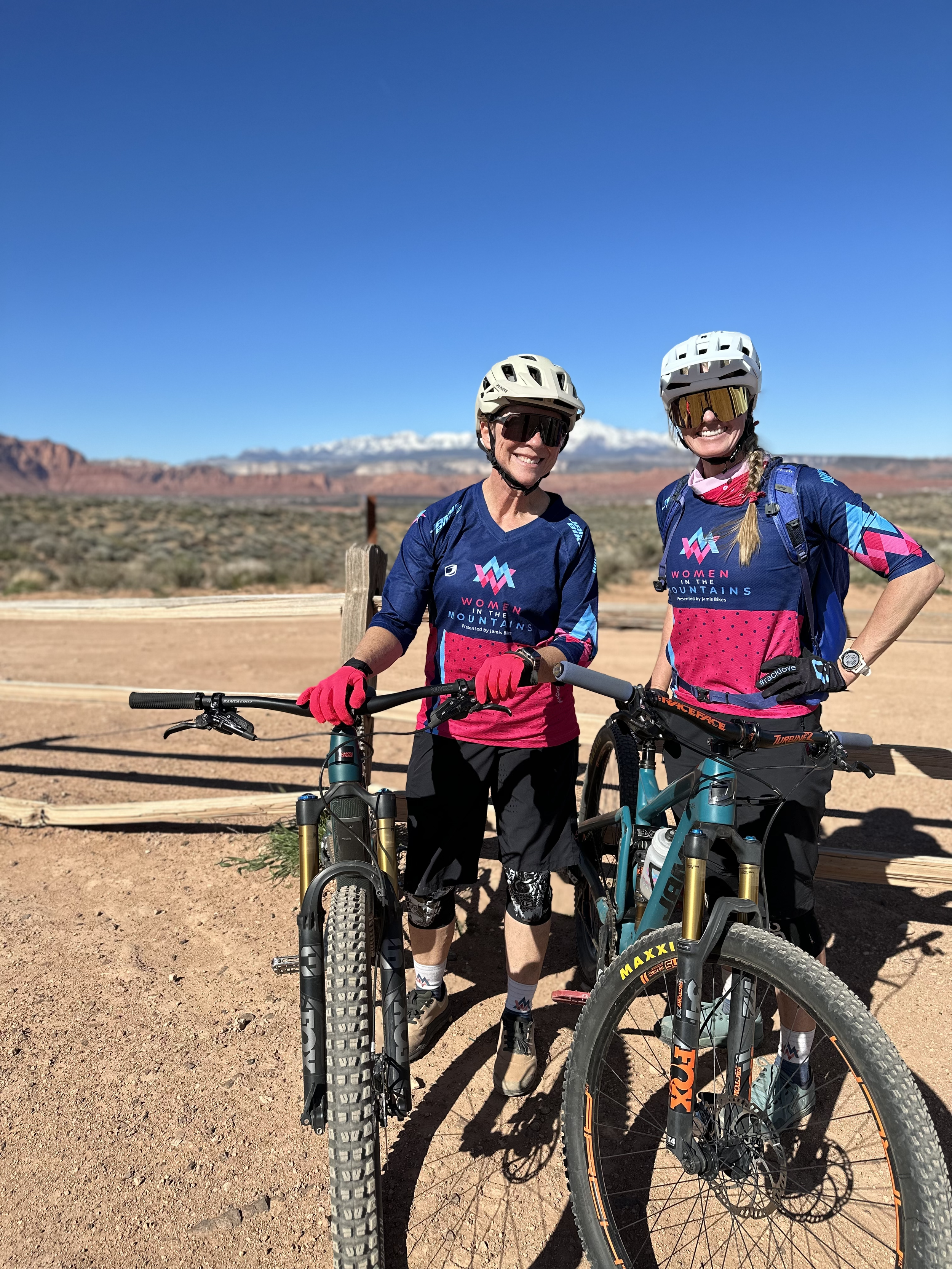
From gearing up with the right equipment to joining a sisterhood of trail enthusiasts, we delve into every aspect of women’s mountain biking. Ahead, we introduce an empowering journey — helping you navigate through the choices of bikes, gear, skills, and social connections that mold the complete female mountain biker.
Mountain biking is a thrilling outdoor activity that offers a great way to stay fit, make friends, and enjoy nature away from urban settings. Here are some key insights from various sources:
- Gear and Safety: When hitting the trails, it’s essential to wear appropriate gear like full gloves for comfort and protection. Mountain bike gloves with light padding provide a good grip and control, making your ride more enjoyable1.
- Community and Support: Riding with friends not only enhances the experience but also provides a supportive environment for learning and growing in the sport. It’s encouraged to ask questions and seek advice from fellow female cyclists to improve your skills1.
- Mindset and Mastery: Developing a confident mindset is crucial in mountain biking. Women in the sport are breaking barriers and achieving beyond their expectations by mastering their minds, managing trails effectively, and riding with confidence. Techniques like nervous system calming, precise steering, and efficient braking are key to becoming a proficient rider3.
- Learning Resources: There are various resources available, such as webinars and courses, that focus on improving skills, mindset, and overall performance in mountain biking. These resources offer valuable insights into overcoming challenges, building confidence, and enhancing riding abilities3.
In summary, mountain biking offers not just physical exercise but also mental challenges that can be overcome with practice, support from the community, and a positive mindset. Embracing these aspects can lead to an enriching experience on the trails for women riders.

Benefits of Mountain Biking for Women
Mountain biking for women offers much more than a cardio workout; it is a gateway to a well-rounded lifestyle. Firstly, the tailored design of women’s mountain bikes ensures a more natural fit. This allows female riders to handle technical terrain with enhanced ease and confidence thanks to features like the smaller frame sizes and women-specific saddles. Also, the lighter suspension tuning meets the needs of those with a lighter body weight, ensuring a smoother ride.
Besides the physicality, mountain biking cultivates personal growth. As riders push beyond comfort zones, they develop resilience and a growth mindset. The spirit of camaraderie is another gem; the mountain biking community is renowned for its inclusiveness. Women gather for events such as skills clinics, fostering an empowering network.
The sport brings a balance of solitary reflection and social interaction. It also instills the importance of basic maintenance, a skill that boosts self-reliance. From the thrill-seekers to those enjoying a casual trail ride on their hardtail mountain bike or full-suspension companion, the trails beckon. Women of all skill levels find a sense of achievement in mastering flats, hills, and everything in between, making the investment in the right gear from bike helmets to the ideal 18-Speed Women’s Mountain Bike well worth it.
To improve their mountain biking skills, women can consider the following tips
Attend Beginner Mountain Biking Clinics: Participating in beginner mountain biking clinics specifically designed for women can provide a safe space to learn correct body position, braking techniques, cornering, and riding over obstacles effectively. These clinics offer supportive environments for skill development2.
- Practice and Push Yourself: Constantly challenging oneself to improve is key. Engaging in fundamental skills guides and pushing personal limits can help conquer mountain biking goals and enhance overall proficiency3.
- Ride with Friends: Riding with friends not only makes the experience more enjoyable but also provides a supportive environment for learning and growing in the sport. Asking questions and seeking advice from fellow female cyclists can help improve skills1.
- Invest in Coaching and Training: Consider investing in coaching sessions or structured training programs to receive personalized feedback, guidance on technique improvement, and structured skill development plans5.
- Tailor Terrain Choice to Goals: Tailoring terrain choices to specific goals, such as races or personal challenges, can help focus training efforts on areas that need improvement. Studying terrain profiles and incorporating relevant training rides can enhance performance on targeted terrains5.
- Focus on Duration Over Distance: When planning rides, focusing on the average duration rather than just distance is crucial. Mountain biking’s dynamic nature with natural obstacles and elevation changes can affect travel time significantly. Training for duration helps build endurance and adaptability to various terrains5.
By incorporating these tips into their mountain biking routine, women can enhance their skills, build confidence, and enjoy a more fulfilling experience on the trails.

Choosing the Right Womens Mountain Bike
When choosing the right women’s mountain bike, it’s essential to understand that the optimal fit and comfort can greatly influence riding experiences and performance. Women’s mountain bikes are designed with specific features to match the female frame, typically shorter, requiring shorter stack heights and lower handlebars. This ensures that control and access to the ground are both within easy reach, fostering confidence and safety.
Many brands offer models with benefits geared toward those with shorter torsos and longer legs, or for riders who favor women-focused brands that promote female athletes and movements. The availability of extra-small sizes caters to shorter riders, while aesthetic preferences such as color and design are catered to as well. Aesthetics aside, performance features such as high-quality suspension systems, multiple gears, and robust brakes should be non-negotiable in a quality women’s mountain bike.
Manufacturers such as Cannondale acknowledge these needs and provide a gamut of women’s mountain bike models, spanning from nimble front-suspension bikes to the more adventure-ready full-suspension options. Each style suits different riding conditions and preferences, so it pays to assess what kind of terrain you’ll be tackling most frequently.
Factors to Consider
When selecting a women’s mountain bike, there are several key factors that demand attention. First, the bike should accommodate your stature with features like shorter stack heights and lower handlebars, essential for both control and comfort. Next, size matters. Smaller frame sizes, available down to extra-small, are critical for accommodating shorter riders.
Personal preference also plays a crucial role. Some women might seek a connection with a brand that aligns with a women’s mountain biking community or represents women in the sport. However, not all female riders require women-specific design features. It’s important to note that while some women’s models offer ergonomically beneficial tweaks, the range in women’s body types means that a unisex or men’s model might sometimes be a better fit.
Always prioritize a robust suspension system, gears versatile enough to handle varying terrains, and high-quality brakes to ensure you have a comfortable, safe, and efficient ride. Evaluating these factors carefully can lead you to a bike that not only fits well but also inspires more confidence and joy on the trails.
Differences in Frame Geometry
Women’s mountain bikes are distinct in their frame geometry. The frames tend to be smaller in comparison to men’s or unisex bikes, addressing the average shorter stature of female riders. Some brands have taken to engineering models with lighter suspension tuning, which accommodates lighter riders and results in a more responsive and comfortable ride.
However, not all brands echo this design philosophy. Brands such as Juliana may not always offer the larger frame sizes like L or XL, which are commonly available in men’s or unisex models. Moreover, the downward curvature of the top tube in some women’s mountain bikes serves to provide easier access and better straddle-space for those with a shorter reach or height.
Designed with comfort and maneuverability in mind, especially on rugged trails, women’s mountain bike frame geometries aim to strike the perfect balance while riding on uneven terrain. The thoughtful design intends not just to account for female proportions but to also enhance the overall riding experience.
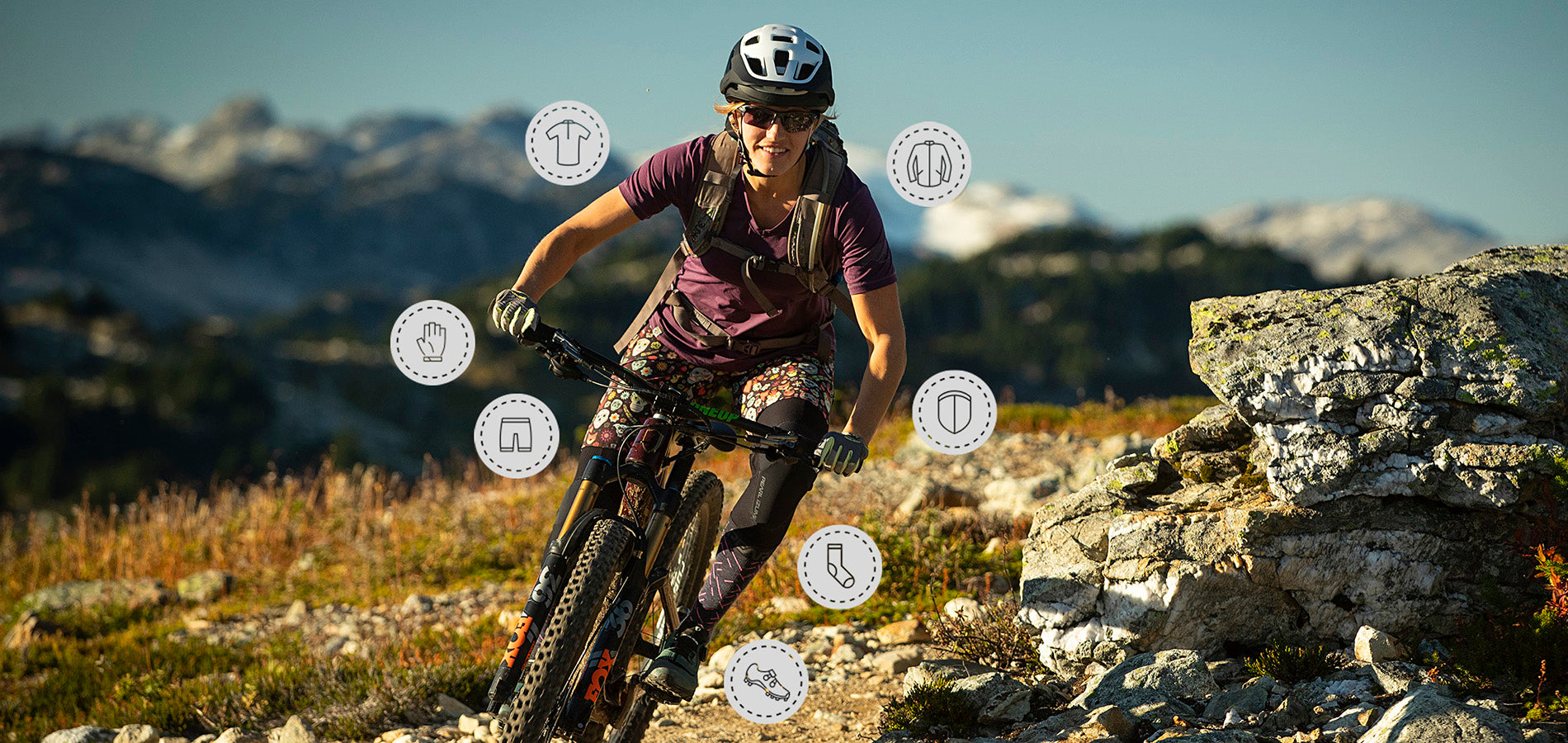
Wheel Size and Suspension Options
Modern mountain bikes predominantly employ 27.5-inch or 29-inch wheels, moving away from the older 26-inch standard. These larger diameter wheels offer increased stability and a smoother transition over obstacles and bumpy terrain.
In terms of wheel size, Cannondale’s women’s mountain bikes typically feature 27.5-inch wheels for riders between 4’6” and 5’4” and utilize 29-inch wheels for medium and large frames. This approach optimizes the wheel-to-rider height ratio, facilitating balanced handling and control.
Today’s mountain bikes come with front-suspension (hardtail) or full-suspension setups. Hardtail bikes are equipped with a suspension fork at the front, ideal for those who prefer a lighter bike and mostly ride on smoother trails. Full-suspension bikes, which have shock absorbers in both the front and rear, provide better control and comfort on more technical terrain but can be more expensive.
The decision between opting for a hardtail or full-suspension will depend on the rider’s terrain preference, objectives, and budget. With the right selection, the bike will serve as a steadfast companion on any adventure, be it on an unyielding mountain pass or a breezy hillside descent.

Top Mountain Bike Brands for Women
Mountain biking is a thrilling sport that’s enjoyed by both men and women, and as such, it’s essential to have equipment that fits well and improves performance. Manufacturers have recognized the specific needs of female riders and have developed bikes that cater specifically to them. In the search for the perfect ride, here are some of the top mountain bike brands to consider for women.
Specialized
Specialized is renowned for their focus on performance and innovation. Their women’s mountain bikes are designed to fit the specific body frames of women, accommodating shorter torsos with shorter stack heights and lower handlebars. These bikes often come equipped with a robust suspension system and multiple gears for versatile riding across various terrains, not to mention high-quality brakes for enhanced safety and control. As the price increases, so does the quality of Specialized components, such as lightweight and durable frames, advanced suspension systems, and premium drivetrains with wide gearing ranges. Specialized offers a range of wheel sizes, including 26, 27.5, 27.5+, and 29 inches, alongside options for full suspension and hardtail models built with different frame materials like aluminum and carbon.
Liv Cycling
Dedicated to women riders, Liv Cycling stands out as the sister company to Giant with a sole focus on women’s cycling needs. Their mountain bikes are designed with unique geometry tailored to the average differences in women’s body proportions, such as shorter torsos and longer legs. Liv Cycling’s mountain bike line offers both full-suspension and hardtail options, with frame materials that include lightweight composite/carbon as well as sturdy aluminum. The wheel sizes available range from 29, 27.5, 26, to mixed options, allowing for personal preference and specific trail requirements. Liv bikes are also known for their women-specific design touches, such as shorter top tubes and a higher stack, which enhance comfort and riding confidence through a better fit.
Juliana Bicycles
With a strong commitment to the female mountain biking community, Juliana Bicycles offers a range of bikes that suit various mountain biking disciplines. The Juliana Furtado, for instance, is an all-around performer perfect for cross-country, enduro, and even bike park riding. It features a mixed wheel size setup, combining a nimble 27.5-inch rear wheel with a stable 29-inch front wheel for balanced performance. Juliana’s Wilder model caters to riders looking for a short-travel, cross-country focused bike with standard 29-inch wheels. Meanwhile, the Juliana Roubion is designed for those who love the thrill of downhill, offering a mixed wheel setup and plush suspension with 150mm rear and 160mm front travel. Juliana’s bikes often mirror the quality and design of Santa Cruz models, with the Roubion paralleling the Santa Cruz Bronson in suspension and capability.
Choosing a women’s mountain bike from these top brands means embracing both quality and specialized design, ensuring female riders have the best possible equipment for their adventures on the trails. With each brand offering a distinct approach to women-specific mountain biking, there’s a bike out there to suit every rider’s style and preference.
Essential Gear for Female Mountain Bikers
Hitting the mountain trails isn’t just about having a great bike; it’s also about bringing the right gear to ensure a safe, comfortable, and enjoyable ride. For female mountain bikers, this means selecting items designed with their specific needs in mind. A perfect example is the Osprey Raven 10 Women’s Hydration Backpack, which features compartments tailored for essential equipment and seamless hydration on the go.
When packing for a ride, there are a few indispensable items that should always come along. This includes a spare tube for those unexpected flats, a toolset for quick fix-its, tire levers to ease the tire removal process, a reliable tire pump, and a first aid kit should any minor injuries occur. Meanwhile, mountain biking clothing should cater to the active female form—snug enough to avoid snags on the bike, yet flexible enough to allow full freedom of movement.
For women who experience discomfort on unisex bikes, a women’s specific mountain bike can make all the difference. Respecting the nuances of a woman’s physique—shorter stack heights and lower handlebars can vastly improve handling for those with shorter torsos or longer legs. The key to picking the right gear is recognizing that while mountain biking is a unisex sport, the equipment doesn’t have to be.

Bike Helmets for Women
Safety is paramount on the trails, and a quality helmet is the first line of defense for any rider. While the content provided did not dive into specific women’s bike helmets, we know that they’re a critical accessory. Contemporary women’s helmets are characterized by designs that accommodate different hair styles and head shapes, ensuring both comfort and protection. They come with adjustable straps and fitting systems, often with added space at the back to accommodate a ponytail.
Additionally, women’s helmets may boast features like adjustable visors, enhanced ventilation systems, and lightweight materials to reduce neck strain over long rides. Sizing is crucial, and most brands offer comprehensive fitting guides to ensure the helmet sits snugly and securely. Design elements, from sleek profiles to color schemes that stand out for visibility, establish that style need not be sacrificed for safety. It’s recommended to seek out models that meet established safety standards like the CPSC certification in the U.S., for peace of mind during every ride.
Bike Computers and Accessories
In an era where data is king, bike computers have become essential tools for the discerning cyclist. These compact devices provide valuable insights into performance, from speed and distance to more nuanced metrics like elevation gains and pedal stroke efficiency. Women who are serious about their mountain biking performance may opt for GPS bicycle computers with mapping capabilities to explore new trails without fear of getting lost.
Wearable technology complements these computers: fitness trackers and heart rate monitors synch with bike computers for a full view of one’s physical exertion and progress. Extra batteries are a practical accessory, ensuring that long-distance riders never find themselves without power. And indoor cyclists can benefit from trainer accessories that simulate the outdoor experience, allowing for training sessions regardless of weather conditions. When paired with a power meter, bike computers emerge as a cutting-edge ally in measuring detailed performance metrics, crucial for those aiming to improve their mountain biking prowess.

Bike Maintenance Tools
No ride is without its risk of mechanical issues, and it’s there that the true value of a well-packed toolset is realized. Flat tires are the most common annoyance, but with the right tools—a spare tube, tire levers, and a dependable pump—a quick repair can get you pedaling again in no time. Knowledge of basic maintenance can often mean the difference between an amazing day on the trails and a frustrating one.
It’s also not just about fixing problems but preventing them. The frequent use of chain lubricants, for instance, can ensure a smoother ride and a longer lifespan for your bike. Women’s mountain bike clinics and local community events are fantastic opportunities to learn about essential maintenance and care to keep your bike in prime condition. Preparedness is key, and with the right tools at hand, female riders can face technical terrain with confidence and expertise.
Building Skills on the Trails
Venturing into mountain biking, riders of all levels must prioritize skill-building to navigate the trails with confidence. Trail ratings at various parks provide a guide to the complexity and difficulty expected, allowing women riders to select paths that align with their abilities. From green circle (easiest) to double black diamond (expert only), these ratings ensure that beginners can find routes that are engaging without being overwhelming. As ladies progress, they can challenge themselves on more demanding trails.
Skills Clinics for Women
For women looking to improve their mountain biking proficiency, skills clinics offer invaluable education on fundamental riding techniques. These clinics are tailored for female riders and often employ women as coaches, creating an environment that supports womens learning styles. From mastering the platform position and trail scanning to refining downhill and climbing postures, these clinics provide the structured guidance that can transform riding experiences. Clinics such as the 2024 CAMBA Women’s South Mountain Bike Clinic offer personalized training for women identifying as mountain bikers over the age of sixteen, fostering enhanced confidence and bike handling skills on single-track trails.
Conquering Technical Terrain
Mountain biking is as much about finesse as it is about strength, especially when tackling technical terrain. Learning to maneuver through rocky sections, over roots, and around tight turns requires specialized training. Skills camps like Ladies AllRide and specific mountain biking events provide focused instruction on techniques such as ratcheting and operating a pump track—skills that are crucial for handling such challenging environments. Women’s series clinics offer mentorship for beginners and advanced riders, emphasizing the importance of confidence and competence on difficult downhill sections and technical terrain.
Improving Mountain Biking Techniques
Whether new to the sport or seasoned in the saddle, mountain biking skills clinics offer something for everyone. Participants can expect to learn essentials like platform position, trail scanning, and cornering techniques, as well as how to conduct basic maintenance such as changing flat tires. Small group placements based on extensive questionnaires ensure that riders receive targeted instruction. Along with technical abilities, these sessions build the community and personal growth intrinsic to mountain biking. Ride logs are recommended as a means to track progress and achievements, serving as a motivational tool for continuous improvement. Women bikers are also encouraged to engage in trail maintenance and participate in skills nights to further hone their abilities and contribute to the larger biking community.

Riding Safely: Tips for Female Riders
Mountain biking is an exhilarating sport that combines physical exercise with the great outdoors. For female riders, there are key considerations to ensure a safe and comfortable ride. The right gear and a few tips can make all the difference on the trails.
Women’s mountain bikes are often designed with a women-specific saddle. Since women generally have wider sit bones compared to men, a broader saddle provides enhanced comfort, an important feature for long rides over rugged terrain. Additionally, female-focused coaching clinics like the Womens Bike Skills Series can elevate a rider’s confidence and proficiency, especially in downhill scenarios. These practical workshops cater to all levels, from beginners to advanced riders. Furthermore, the CAMBA Women’s South Mountain Bike Clinic is an excellent weekend destination for women aiming to improve their skills under the guidance of seasoned instructors, boosting their trail confidence in a supportive environment.
Another significant milestone in the world of women’s mountain biking is the International Women’s Mountain Biking Day. This event fosters camaraderie, drawing seasoned and novice mountain bikers into a fun-filled day of riding, skill-building sessions, and celebrating female participation in the sport.
Safety on the trails also involves gearing up correctly. A helmet with a full-face option ensures maximum protection for the head, while large coverage sunglasses or goggles shield the eyes from the elements. Elbow and knee pads offer protection against falls, and full-finger gloves not only enhance grip but also safeguard the hands from scrapes and blisters. Let’s gear up safely and hit the trails with confidence.
Helmet Picks and Safety Gear
For women mountain bikers, the helmet is not just another accessory—it’s a vital piece of safety equipment. A full-face option delivers superior protection during falls or when riding through low-hanging branches and areas with potential debris. Look for helmets that combine comfort with comprehensive coverage.
Eyes are vulnerable to dust, flying debris, and varying light conditions. Thus, wearing large coverage sunglasses or goggles will protect your vision and improve ride quality. Select gear that offers UV protection and anti-fog features for optimal clarity.
Elbow and knee pads are not to be overlooked, as they can significantly minimize the impact of falls. Durable, well-fitting pads can prevent scrapes and bruises, while allowing unrestricted movement. Full-finger gloves are crucial across terrains for better grip, hand protection, and warmth in cooler conditions. Opt for gloves with padded palms and moisture-wicking material to maintain comfort throughout your ride.
Flat Tire Emergency Tips
A flat tire doesn’t have to end your day on the trails if you’re prepared with the right tools and knowledge. Always pack a spare tube and a toolset that includes the essentials for bike repair. A tire lever is a must-have to efficiently remove the tire from the rim. These are often lightweight and fit easily into a backpack or under your bike seat.
Your preparation kit should also include a portable tire pump. Not only is it vital for fixing a flat, but it’s also handy for adjusting tire pressure to suit trail conditions. Always carry a first aid kit as well; it should contain the basics to address cuts, scrapes, or any other minor injury. By equipping yourself with these emergency tools, you’re ready to tackle any setback and make sure a flat tire is just a pit stop, not the end of your adventure.
Rules of the Trail Etiquette
Trail etiquette is essential for ensuring everyone’s safety and enjoyment while preserving the natural environment. When mountain biking, it’s crucial to yield to hikers and equestrians, demonstrating mutual respect among trail users. If you come across horses, slow down and pass with caution to avoid startling the animals, which can be a safety concern.
Climbing riders have the right of way, so if you’re descending, be prepared to stop and let them pass. This rule maintains the flow and safety since it’s easier to restart downhill than uphill. Adhering to established trails prevents environmental damage and disorientation, while respecting closed areas conserves sensitive habitats and maintains safe experiences for all.
Using a bell or calling out when overtaking ensures that your fellow trail users aren’t caught off guard, fostering a friendly and cooperative atmosphere. Following these simple rules helps to keep mountain biking enjoyable and sustainable for all who share a love for this dynamic sport.
Joining the Mountain Biking Community
Engaging with the mountain biking community opens doors to camaraderie, learning, and adventure for female riders. Skills events tailored for women can range from hands-on bike maintenance workshops to trail etiquette discussions and advanced bike handling technique sessions. These events provide invaluable knowledge that enhances safety and enjoyment on the trails.
Local bike shops play a pivotal role in strengthening the community’s fabric by organizing special events like women’s nights. These gatherings are more than just a social affair; they are a platform for storytelling, showcasing inspirational films, and creating networking opportunities that foster solidarity among women mountain bikers.
A cornerstone of the community is the recognition of Women’s Mountain Biking Day by local governing bodies, such as the Colorado Governor, which celebrates women’s contributions to this vibrant sport. In the spirit of continued growth, women are encouraged to champion the cause for greater resources, increased access, and expanded youth programming in the mountain biking community.
Social media platforms are also excellent resources for forging connections within the community. Following accounts like @LadiesAllRide on Instagram can offer a steady stream of tailored content, motivation, and practical mountain biking tips that resonate with female riders.
By joining forces with fellow enthusiasts, advocating for inclusive resources, and drawing inspiration from various platforms, female mountain bikers can significantly enrich their experience and contribute to the sport’s ever-growing diversity.
Ladies AllRide Programs
Since its inception in 2010, Ladies AllRide has been dedicated to uniting women in the sport of mountain biking. It’s not just about pedaling through trails; it’s about empowerment, personal growth, and connecting with others who share the same passion. The program offers mountain bike skills camps that emphasize not only the joy of biking but also foster an environment of support for all participants.
Ladies AllRide is known for its inclusivity, welcoming individuals of all body types, fitness levels, skin colors, LGBTQ+, non-gender conforming persons, and women aged 18+ from diverse backgrounds. Ensuring everyone finds their place, participants are sorted into small groups based on their unique needs and skills assessed through a detailed questionnaire. This attention to detail guarantees an enriching and custom-tailored camp experience.
Further embodying the spirit of inclusivity, Becky Timbers, the founder of the bike blog Two Wheeled Wanderer and a certified mountain bike coach, is among the experts who guide women through the transformative experience at Ladies AllRide. This synergy of community, learning, and mentorship is what makes the program a beacon for female riders seeking growth through mountain biking.
Group Rides and Events for Women Mountain Bikers
For women embracing mountain biking, group rides and events are pivotal for community building and skill development. The Ladies AllRide camps specially designed for people who identify as women create an opportunity to learn and refine biking skills in an enjoyable, non-judgmental setting. These camps are all about inclusiveness and cater to beginners as well as to those with an extensive riding history.
The celebration of International Women’s Mountain Biking Day is a significant event that calls women to the trails through an array of activities. From organized rides to skill-building practices and social media outreach, the day is a beacon of motivation and recognition for the contributions of women mountain bikers.
Local bike clubs or shops might commemorate Women’s Mountain Biking Day with organized rides. However, for those unable to join in person, there are virtual challenges that still enable participation and the stoking of the collective spirit. Such initiatives are vital for keeping the flames of enthusiasm alive and inspiring more women to join the ranks of mountain bikers.
Finding Local Bike Shops and Clubs for Women
Discovering local bike shops and clubs that cater to women mountain bikers can be a transformative step in fully engaging with the sport. These local hubs often host women-only mountain bike rides, forging a sense of belonging and a safe space for female riders to share in the thrill of biking together.
Women-focused bike clubs are known to team up with trail organizations to arrange exclusive volunteer days. These events are not only fun and educational but also contribute to trail sustainability. Additionally, virtual challenges, set up with the help of fitness tracking apps, offer an alternative platform for women to engage with mountain biking culture, fostering community and motivation among participants even in the absence of physical proximity.
Ladies AllRide stands out as a program designed with the mission of educating and uniting women interested in mountain biking, emphasizing inclusivity across skill levels, body types, or backgrounds. Those seeking likeminded groups will find a warm welcome in inclusive environments that cherish the fun and joyful spirit of mountain biking for everyone who identifies as a woman.
The journey into the world of mountain biking for women can lead to lifelong friendships, bolster self-confidence, and promote inclusive experiences. With a wealth of resources in local shops, clinics, and social media, jumping into this community is an invitation to both adventure and personal growth.
Conclusion: Empowering Women on the Trails
Mountain biking is no longer just a male-dominated sport, and the establishment of Women’s Mountain Biking Day is a testament to the growing presence of female riders. Ladies AllRide and CAMBA Women’s Weekend Mountain Bike Clinic exemplify the commitment to nurturing this inclusive community. Programs like these provide a foundational platform to empower women, tailoring their coaching methodologies through pre-clinic assessments ensuring personalized guidance.
Andree Sanders, representing Trips for Kids Metro New York, spearheaded the Women’s Mountain Biking Day, promoting not just participation but also camaraderie and advocacy. Social media has become a powerful tool for these events, driving engagement through various campaigns that deepen the connection of female riders worldwide.
Be it an absolute beginner or an advanced rider, every woman finds her space and support system within these initiatives. They come together, united by the thrill of the trails, to share, learn, and push the boundaries of what it means to be a woman in the world of mountain biking. This collective effort turns individual ambition into collective empowerment, one ride at a time.
